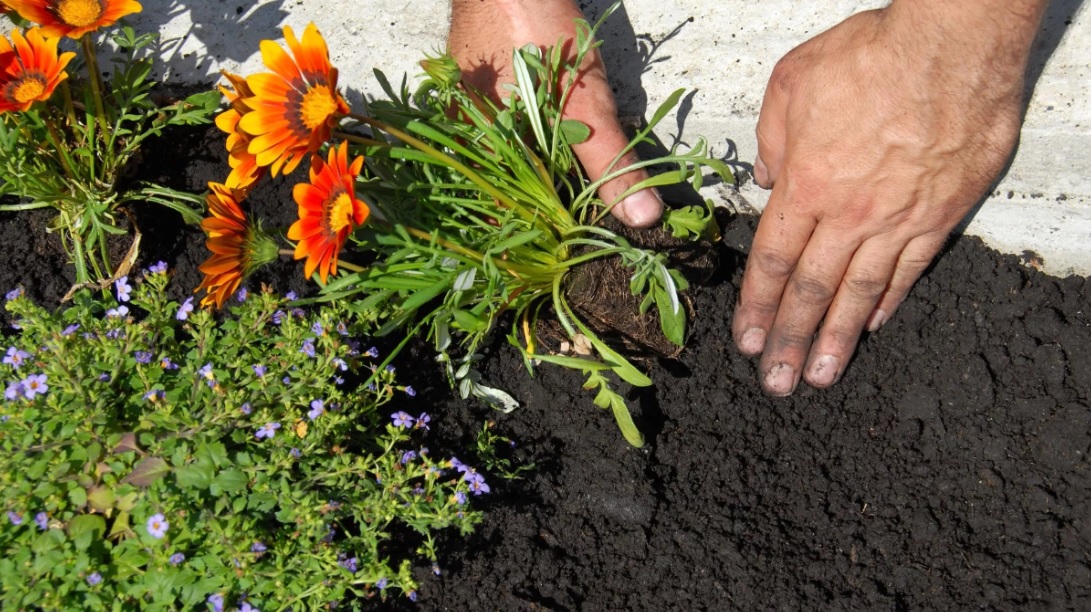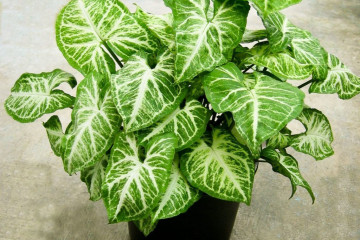Gatsaniya flower - how it blooms on a tuber, what kind of soil is needed for growing
Content:
In recent years, the bright exotic gatsania flower has become very popular with Russian gardeners. This plant is quite demanding and capricious, but, having familiarized yourself with some of the tricks and features of care, you can start growing it in the conditions of Central Russia.
Description and main characteristics of gatzania
The South African gatsania (or gazania) flower looks a bit like a chamomile in appearance, which is why it was called that. This is a stunted plant of the Astrov family, which came to Europe in the middle of the 18th century, and was named after the Italian priest T. von Gaza. In the wild, it grows in Africa and coastal areas of Australia.
Gatsania flowers are formed on a smooth, tubular stem 25 cm high and reach a diameter of 5-12 cm.The color depends on the variety and can be almost any: snow-white, rich or pale yellow, orange, all conceivable shades of pink, red. A distinctive feature is the darker and more contrasting strokes going to the center of the flower.
Gatsania has a flexible aerial part creeping along the ground, a taproot. The leaves and stems are fleecy, silvery; milky juice appears on the cut. The upper part of the leaves is smooth, bright or dark green. Seeds are thin, elongated, black and white, with a small crest.
The use of gazania in landscape design
In Africa, gatsania is grown as a perennial, but in European regions it does not survive the cold winter and is grown as an annual plant. Suitable for almost all types of climates, but in cold latitudes, it should be dug up in autumn. The plant does not like waterlogging and high rainfall. Stably tolerates temperature fluctuations from -5 ° C to 35 ° C, with severe frosts it immediately dies.
Gatsania - an annual or perennial - can be grown in containers and flower pots to decorate balconies and terraces. Suitable for placement in flower beds, in flower beds, along paths in the garden, on alpine slides.
In the design of a flower garden, Iberis, Venidium, Lobelia can become its ideal neighbors. Avoid planting near too tall plants that will block access to light, such as verbena or delphinium. In the form of a cut, gazania lasts about 8-9 days.
Hybrid plant varieties, among which harsh gazania and long-shot gazania are most common, are grown as annuals. They can reach 30 cm in height, bloom profusely from mid-summer until the onset of cold weather. These varieties are distinguished by multi-colored reed petals, making them of particular interest to gardeners. Suitable for creating contrasting colorful mixes, bloom earlier and are more resistant to unfavorable weather.
There are also many other varieties, including peacock gazania, feathery, one-flowered.Peacock gazania has about 20 cm long leaves, covered with harsh hairs on top, juicy orange flowers with a yellow center and a black ring around it. The feathery gazania has a pinnately dissected leaf shape and orange flowers with a dark mark towards the middle. The single-flowered cultivar is a compact plant with creeping stems and pale yellow baskets of numerous medium-sized flowers.
Gatsania: growing from seed
Gazania seedlings develop very slowly, therefore, it is necessary to calculate the planting dates in advance. When to plant gatsania when grown from seed? It is better to start this process at the end of winter, in February. To achieve the result, you need to take into account the characteristics of the plant and act as follows:
- For growing seedlings, sufficiently deep containers are chosen, since the plant has a long taproot, which requires space for development.
- A drainage layer is placed in the container.
- Light soil is prepared and filled up.
- Seeds are sown, placing them on the soil surface 2-3 cm apart, and sprinkled with a small layer of earth.
- Crops are moistened from a spray bottle with settled water at room temperature.
- Cover the container with polyethylene or glass.
- Seedling containers are placed in a warm, lighted place with an air temperature of at least 20 ° C.
- The soil moisture is checked daily and ventilated. The soil should not dry out, otherwise the seeds will dry out, barely rising.
Subject to the described conditions of proper care, the first seedlings will appear in a couple of weeks. From this moment, the film or glass is removed from the seedlings, the containers are transferred to a place with good diffused lighting. The soil continues to be regularly moistened, avoiding drying out or waterlogging.
If the seedling containers are deep enough, then the pick is carried out not earlier than the appearance of the fourth leaf. Each plant is planted in a separate peat pot so that when planting in the ground, it does not damage the sensitive roots.
Planting and caring for gazania
After the end of the last frosts and the establishment of warm days, you can start planting gazania in open ground. It is better to choose a place for flower beds that is well lit, a heat-loving African guest is not afraid of direct sunlight, she easily tolerates drought. The soil should be fertile and nutritious, well drained. Gatsaniya planting is carried out by performing the following steps:
- At a distance of 20 cm from one another, holes are made in which it will be easy to place pots with seedlings.
- Plants are placed in the wells along with the pots. If the seedlings were nevertheless grown in a common container, then young plants are taken out of them using a long garden spatula and digging in the root along with a clod of earth so as not to damage it.
- After planting, the plants are watered.
- The space around the seedling is mulched.
After gatsaniya takes root in the open field, it will easily tolerate a drop in temperature down to −5 ° C. In cloudy weather and at night, the flowers are covered with a film, and in the morning and in sunny weather they should be opened.
Watering the plant requires moderate, only after the soil dries out. After watering, the soil is loosened and weeded, covering with mulch. When deciding how to feed gatsania for abundant flowering, it is better to opt for specialized fertilizers for flowering plants. The procedure is carried out approximately 1-2 times a month.
An annual plant after flowering and with the onset of cold days must be cut and burned in order to destroy the pests that have settled on it. You can save the flower until next spring by digging up the bushes and planting them in pots. It is necessary to store gatsaniya at a temperature of about 10 ° C in winter. The room must be bright. Plants are rarely watered, only after the soil has completely dried out. In spring, gatsania flowers are planted in a flower bed and their shoots are cut in half.
The collection of gazania seeds is carried out by putting on specially prepared gauze bags on flowers that have just begun to fade, otherwise the ripe seeds will scatter from the gusts of wind.
Growing gazania flowers as a perennial, you need to observe all the same conditions of care. In the fall, gatsania can be dug up and brought into the house. By creating suitable conditions, 14-hour lighting and a temperature of 22-25 ° C, you can not only save the plant, but also achieve its flowering in winter.
Gazania flowers: growing, care, conservation as a perennial
Also, many years of gating during cultivation and care in the conditions of Russian winters can be preserved by transferring it to a closed room, for example, to a basement. In the spring, the plant is returned to the heated soil, observing the planting conditions described above. Towards the end of winter, the plant is propagated by division and transplanted into new land. Next, the pots are moved to a warmer and brighter room, starting to water more often in order to gradually wake up the perennial from hibernation.
Diseases, pests and ways to control them
Despite the plant's resistance to pests and diseases, improper care of gatsania and unfavorable conditions lead to damage by fungal or viral diseases, as well as the appearance of various pests. Due to insufficient lighting and excess moisture, gray rot forms on the plant, which can be eliminated only at the initial stage. For this, gazania is treated with fungicidal preparations.
Garden snails, which often eat the lower leaves of gatsania, are harvested by hand. By the yellowing and wilting of the leaves, one can suspect that the reason for this was the appearance of spider mites and aphids. The tick is destroyed using ditoxin, fufanon or actellic. Aphids are fought with the help of inta-vira, akarina or phytoverm.
Compliance with the rules of care will allow you to grow chic gazania bushes in your summer cottage. Perennial or annual, African chamomile will invariably delight with its unusual bright colors.




















